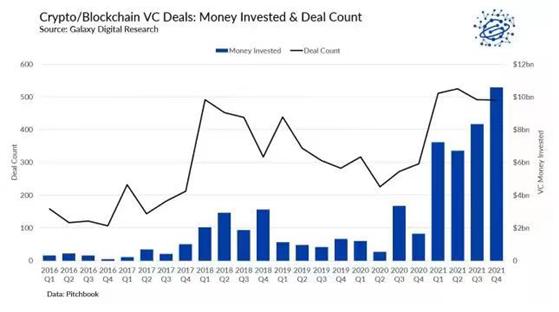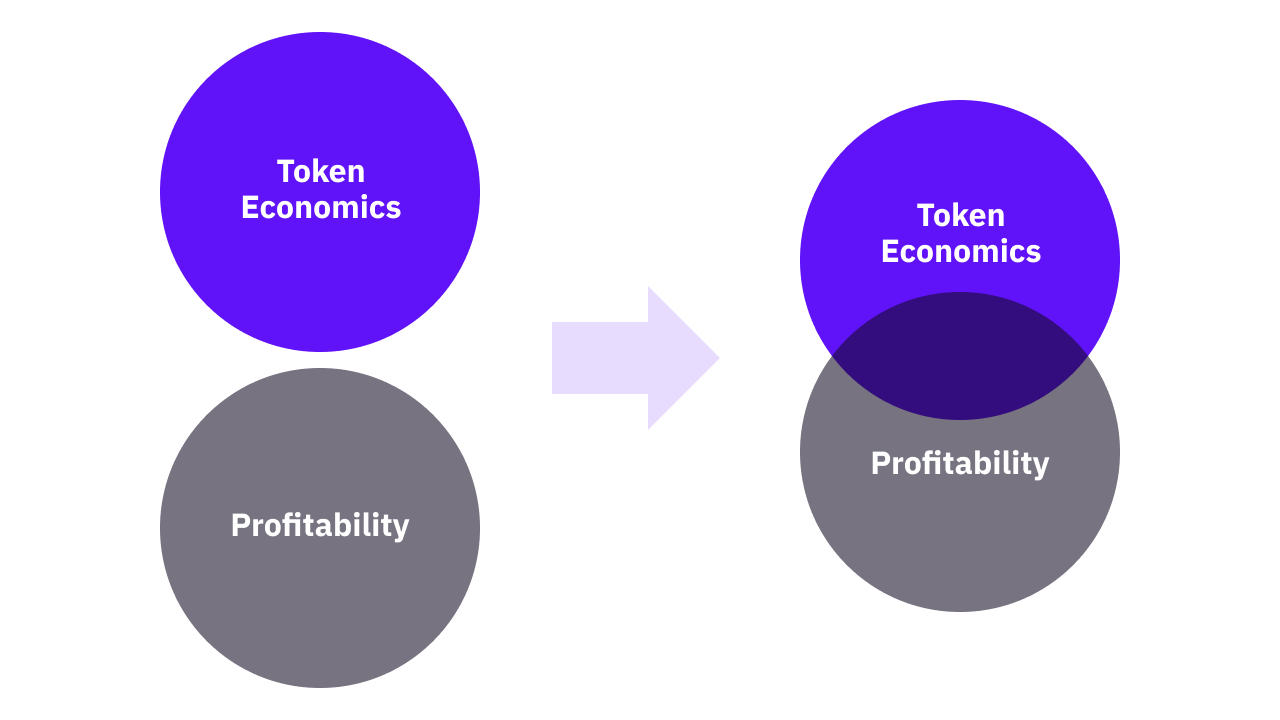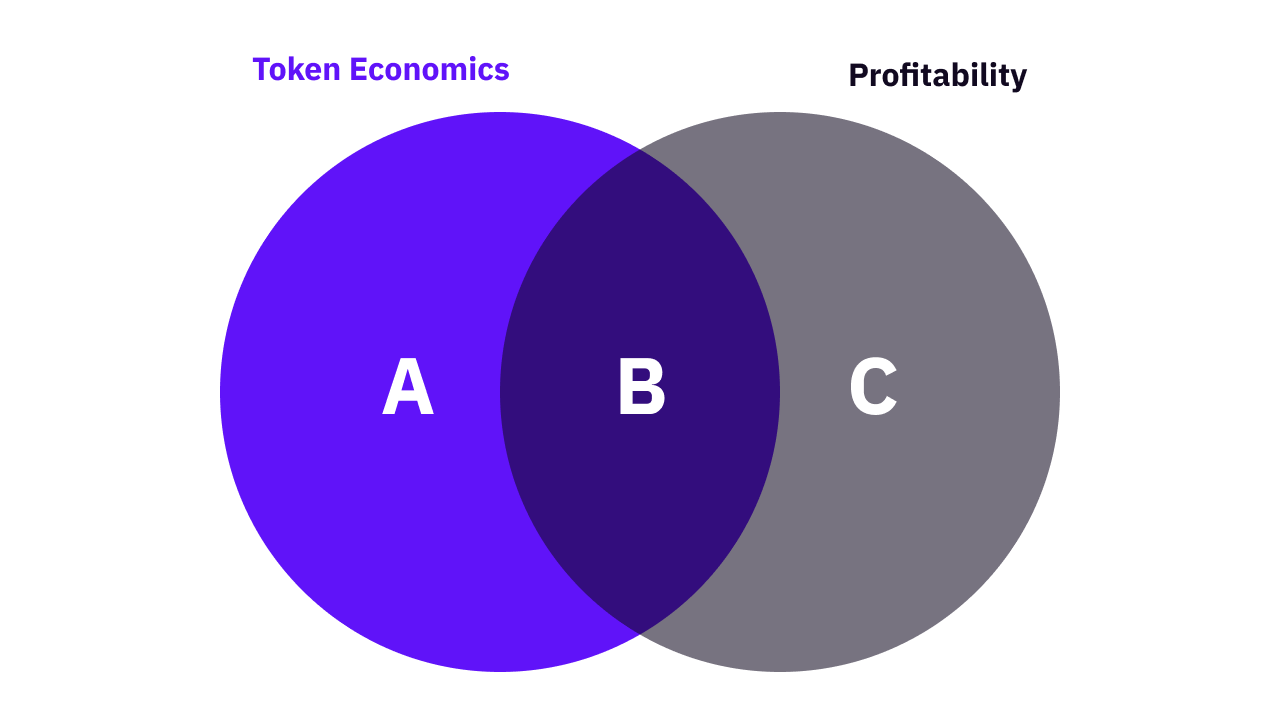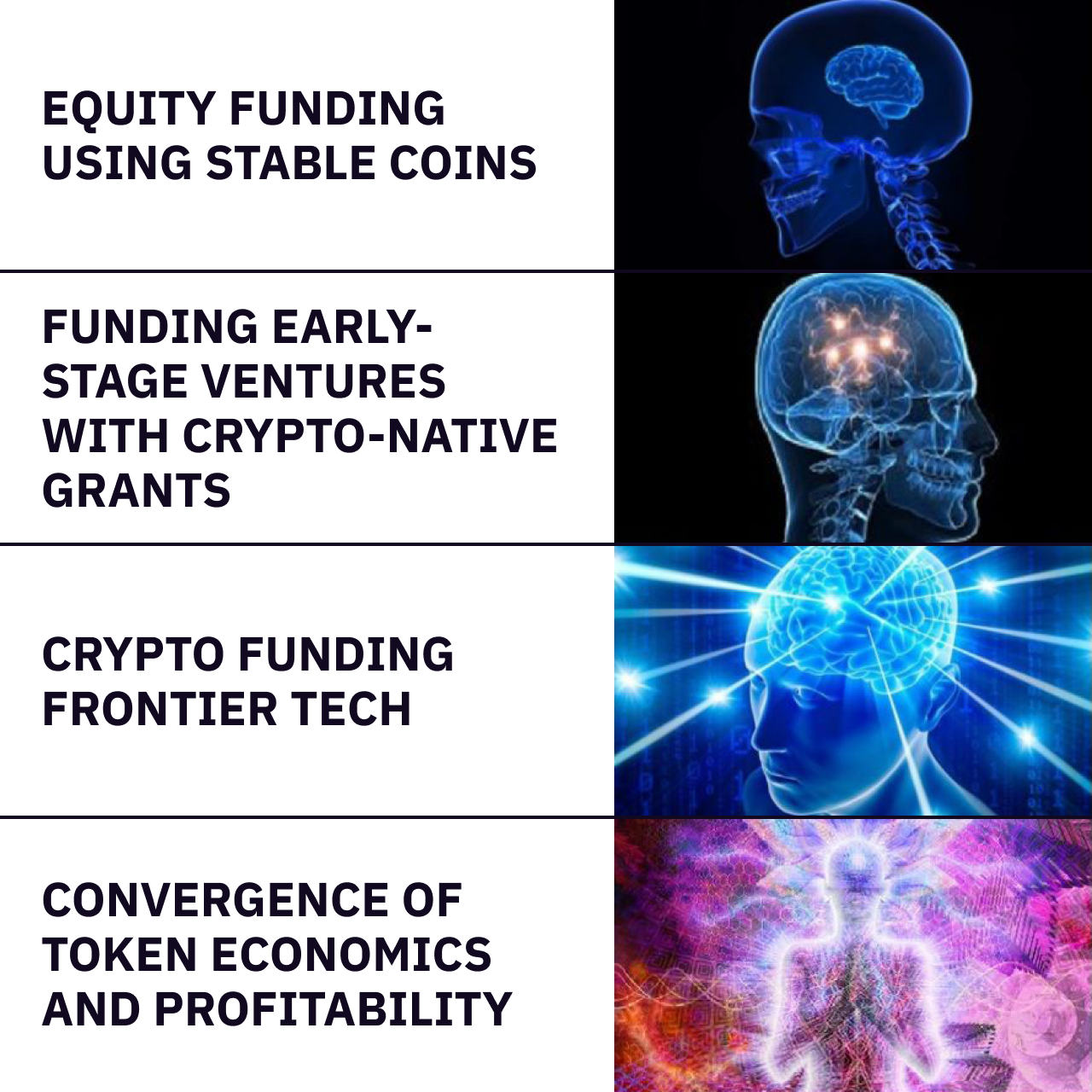A major trend we have seen during the past 10 years is the rise of cryptocurrencies. Despite the often “diss” from some powerful elderlies, crypto is growing. The design space of cryptocurrencies is big enough for innovations that are at least on the same scale as the Internet, allowing hackers, open source developers, and entrepreneurs to build new trustless infrastructures and applications using crypto. As a result, money is pouring into the space.

Still, the space is young - there are a lot of infrastructures in absence, and there are a large number of applications that could emerge from these infrastructures. Therefore, it’s no surprise to have money invested into crypto via VCs. This is already happening.
But what about the other direction? Can crypto come back and fund non-crypto industries?
This is always an interesting question to me, because only when crypto is tightly coupled with the technology and innovation that drive human productivity, can the power of crypto be fully unleashed. In the recent BNB Grant DAO community funding round, a frontier technology track supported 5 teams working on open source quantum software, space tech, and more. It’s the first time the DoraHacks community uses crypto to fund non-crypto builders. But can we make it a long-term effort and support more meaningful projects? Can we further scale it up? Let’s try to discuss it in this article.
First of all, there are already some obvious advantages of funding ventures using crypto:
- Fast and affordable global payment without compromising compliance
- High liquidity
- Less gerontocracy
- Community support
- Open-source and more collaborative culture
& many more …
But given all of these benefits, we haven’t seen crypto funding many new industries.
What are the concerns about NOT using crypto for funding?
Most people in the world use fiat money, and most businesses / organizations use fiat money. If we want to fund anything using crypto, we need awareness among people and organizations. In order for people / organizations to use crypto, we might need to address three major concerns.
- Stability: most ventures want stable currencies.
- Compliance: funding has to be regulatory-compliant, meeting legal requirements like AML.
- Easy conversion to/from fiat money: most supply chains use fiat money, and employees still need fiat money in daily life, so once funded with crypto / stable coins, easy and fast conversion to/from fiat money is important. This will hold true until crypto gets mass adoption.
Technically, 1:1 pegged stable coins (e.g. Circle’s USDC) can meet all requirements above. For really big transactions, stable coins might not have enough liquidity. However, the current stable coin market can definitely support transactions on the scale of a few hundred million US dollars.
If we want to further scale it up, we need more adoption. From some statistics, by 2021, global crypto adoption is only 3.9%, and only over 18,000 businesses are accepting crypto payments. Suppose crypto adoption increases by 10x, and business adoption increases by 100x. In that case there will be much better liquidity provided by stable coins and crypto in general, offering the ability to deal with larger transactions.
Notably, adoption takes time. It took the Internet about 20 years from ~1990 to 2010 to reach 70% adoption globally.
Uniting token economics and profitability
The other major obstacle is the “inconsistency” between token economics and profitability.
In crypto, value is created by token economics. In business, value is calculated from the ability to profit (or profit in the future). If we draw the two domains in a Venn diagram, there was no overlap in the first place.
Token economics is based on the utility of tokens of a certain product (a network, infrastructure, or application). Some cryptos’ values depend on their rarity (Bitcoin, and probably NFTs), while some other cryptos’ values depend on their utility / velocity of exchange (BNB, Ethereum, etc.). As token prices are driven by demands and supplies, the utility of a token largely decides its price. Take the gas fee token utility as an example, as more transactions compete for block space on the Ethereum network, the demand for ETH goes higher, which drives up the price. This is why the concept of “building up an ecosystem” is important to Layer 1 — with more use cases and applications, more users will onboard , and more transactions will happen on the network, therefore creating more demands for a token.
In the business world, companies are valued based on their ability to make profits. Compared to business valuation models, crypto doesn't even have a standard way of valuation by far, and that’s one reason why the volatility of the crypto market has been bigger.

Although token economics and profitability seem to be completely different beasts, they are actually not so divergent. At least, there is some overlap. Here are a few examples:
- Gas fee on Ethereum can be seen as revenue of the network. Miners and stakers make profits in ETH, and users of the network (EOA / smart contracts) pay gas. Reportedly, Ethereum network’s gas fee revenue in Q1 2022 is $2.4 billion. The profit is distributed to miners, and later to stakers.
- Defi protocol governance token’s value fundamentally relies on its ability to profit. Notably, Defi protocols do have clear profit models, normally charging commissions from transactions, except distributing the commissions largely to LP token holders, instead of collecting them centralized.
- Centralized exchange tokens can be used by users to gain allocations from new token listings, or be staked to reduce exchange fees. These tokens are essentially capturing a part of the centralized exchange’s value because they represent some of the profits that the exchange is willing to give away to the community.
So what exactly is the difference between token economics and profitability? The answer is “decentralization”. Token economics is essentially decentralizing profits to a community, and at the same time allowing the token community to take part in governance, though the governance part is often optional.
This also applies to non-profit DAOs. Examples of DAOs that are not profitable include DAO-ified non-profit organizations and protocols that do not charge fees (e.g., Gnosis Safe). DAOs that are not profitable can only rely on donations, tokens of these DAOs can only capture governance value, which depends on their treasury size.
When token economics and profitability start to overlap, we will have the following situation where the two models start to overlap:

There are three areas: pure token economics (A), pure profitability (C), and intersection (B). Here is what they mean in general:
- A — store of value
- B — profits decentralized to community
- C — centralized profits
A company that is decentralizing its profits and governance to a community can move from centralization to decentralization (at least partially).
Possibilities towards funding all ventures using crypto
1. Funding equity with stable coin
The first step is not to change organizational structures, just to use stable coins as a funding currency. This is already useful because using a stable coin is easier, faster, and cheaper than fiat currency.
2. Funding early-stage ventures via crypto donations and grants
Early-stage ventures normally are underfunded for two reasons: uncertainty and lack of liquidity. At the same time, early-stage ventures are most desperate for funding. Crypto can solve this problem by engaging with early supporter communities and matching grant funds to projects. This happens on platforms like DoraHacks. Notably, this is already much more exciting than just using stable coins to fund equity.

3. Funding frontier technologies
Since the Internet boom in the 90s, private investment has been overly funding the Internet while leaving many frontier technologies under-funded. One example is human space exploration - the last time humans landed on the moon was in the 60s.
Only in the past few years, due to the decline of Internet growth rate, focus has been shifted from the Internet to blockchain technology, AI, renewable energy, and commercial space technology.
On the other hand, “mature” industries often have gatekeepers that block new ideas. When Warren Buffet is constantly dissing cryptos and ignoring the progress of the industry as a whole, it is unlikely that any of his portfolio companies will embrace crypto, even if they want to do so.
Therefore, it’s not only more pressing, but also more feasible to explore the ways and possibilities for crypto to fund frontier technology.

4. Converging token economics and profitability
For a long time, there has been a sentiment of “political correctness” within the crypto community that decentralization is fighting with centralization. That’s partially true when it comes to centralized power doing evil, but not always true. In the long-term, any technology is going to be important only when it improves productivity, creates opportunities, and makes people better off. Over time, there will be fewer organizations that are “purely decentralized” or “purely centralized”, the B area of the Venn diagram will grow and eventually make a bigger pie.
Conclusion
Crypto funding non-crypto ventures is both exciting and possible. It can accelerate venture building, help early-stage BUIDLers create organic communities, and fund projects that are underfunded in the fiat world.
The concerns of using crypto funding non-crypto ventures include stability, liquidity, and compliance, which are all solvable.
Although general crypto adoption takes time, we can take steps towards the goal. The design space of crypto funding is unlimited. Examples of what we can do in the short term include (1) using stable coins to fund equities, (2) funding early-stage ventures via crypto donations and grants, (3) funding frontier technologies, and (4) exploring possibilities of token economics / profitability convergence.